DeWalt DW056 Handleiding
DeWalt
Boormachine
DW056
Bekijk gratis de handleiding van DeWalt DW056 (7 pagina’s), behorend tot de categorie Boormachine. Deze gids werd als nuttig beoordeeld door 75 mensen en kreeg gemiddeld 4.5 sterren uit 38 reviews. Heb je een vraag over DeWalt DW056 of wil je andere gebruikers van dit product iets vragen? Stel een vraag
Pagina 1/7

INSTRUCTION MANUAL
GUIDE D’UTILISATION
MANUAL DE INSTRUCCIONES
INSTRUCTIVO DE OPERACIÓN, CENTROS DE SERVICIO Y PÓLIZA DE
GARANTÍA. ADVERTENCIA: LÉASE ESTE INSTRUCTIVO ANTES DE
USAR EL PRODUCTO.
DW050, DW052, DW054, DW056 Cordless Impact Driver • DW051 3/8" Cordless Impact Wrench
DW053, DW055, DW057, DW059 1/2" Cordless Impact Wrench
DW050, DW052, DW054, DW056 Gestionnaire Sans fil De l'Impact • Clé D'Impact Sans fil de DW051 3/8 po
Clé D'Impact Sans fil de DW053, DW055, DW057, DW059 1/2 po
DW050, DW052, DW054, DW056 Destornillador de impacto inalámbrico • DW051 Llave de impacto inalámbrica de
9,5 mm (3/8")
DW053, DW055, DW057, DW059 Llave de impacto inalámbrica de 12,7 mm (1/2")
DEWALT Industrial Tool Co., 701 East Joppa Road, Baltimore, MD 21286 (JUL06)
Form No. 644539-00 DW050–DW059 Copyright © 2003, 2004, 2006 DEWALT
The following are trademarks for one or more DEWALT power tools: the yellow and black color
scheme; the “D” shaped air intake grill; the array of pyramids on the handgrip; the kit box con-
figuration; and the array of lozenge-shaped humps on the surface of the tool.
IF YOU HAVE ANY QUESTIONS OR COMMENTS ABOUT THIS OR ANY DEWALT TOOL,
CALL US TOLL FREE AT: 1-800-4-DEWALT (1-800-433-9258)
General Safety Rules – For All Battery Operated Tools
WARNING! Read and understand all instructions. Failure to follow
all instructions listed below may result in electric shock, fire and/or
serious personal injury.
SAVE THESE INSTRUCTIONS
WORK AREA
•Keep your work area clean and well lit. Cluttered benches and dark areas invite acci-
dents.
•Do not operate power tools in explosive atmospheres, such as in the presence of
flammable liquids, gases, or dust. Power tools create sparks which may ignite the dust
or fumes.
•Keep bystanders, children, and visitors away while operating a power tool.
Distractions can cause you to lose control.
ELECTRICAL SAFETY
•Do not abuse the cord. Never use the cord to carry the tool. Keep cord away from
heat, oil, sharp edges or moving parts. Replace damaged cords immediately.
Damaged cords may create a fire.
•A battery operated tool with integral batteries or a separate battery pack must be
recharged only with the specified charger for the battery. A charger that may be suit-
able for one type of battery may create a risk of fire when used with another battery.
•Use battery operated tool only with the specifically designed battery pack. Use of any
other batteries may create a risk of fire.
PERSONAL SAFETY
•Stay alert, watch what you are doing and use common sense when operating a
power tool. Do not use tool while tired or under the influence of drugs, alcohol, or
medication. A moment of inattention while operating power tools may result in serious per-
sonal injury,
•Dress properly. Do not wear loose clothing or jewelry. Contain long hair. Keep your
hair, clothing, and gloves away from moving parts. Loose clothing, jewelry, or long hair
can be caught in moving parts. Air vents often cover moving parts and should also be
avoided.
•Avoid accidental starting. Be sure switch is in the locked or off position before
inserting battery pack. Carrying tools with your finger on the switch or inserting the bat-
tery pack into a tool with the switch on invites accidents.
•Remove adjusting keys or wrenches before turning the tool on. A wrench or key that
is left attached to a rotating part of the tool may result in personal injury.
•Do not overreach. Keep proper footing and balance at all times. Proper footing and bal-
ance enables better control of the tool in unexpected situations.
•Use safety equipment. Always wear eye protection. Dust mask, non-skid safety shoes,
hard hat, or hearing protection must be used for appropriate conditions.
TOOL USE AND CARE
•Use clamps or other practical way to secure and support the workpiece to a stable
platform. Holding the work by hand or against your body is unstable and may lead to a loss
of control.
•Do not force tool. Use the correct tool for your application. The correct tool will do the
job better and safer and the rate for which it is designed.
•Do not use tool if switch does not turn it on or off. Any tool that cannot be controlled
with the switch is dangerous and must be repaired.
•Disconnect battery pack from tool or place the switch in the locked or off position
before making any adjustments, changing accessories, or storing the tool. Such pre-
ventative safety measures reduce the risk of starting the tool accidentally.
•Store idle tools out of reach of children and other untrained persons. Tools are dan-
gerous in the hands of untrained users.
•When battery pack is not in use, keep it away from other metal objects like: paper
clips, coins, keys, nails, screws, or other small metal objects that can make a con-
nection from one terminal to another. Shorting the battery terminals together may cause
sparks, burns, or a fire.
•Maintain tools with care. Keep cutting tools sharp and clean. Properly maintained
tools, with sharp cutting edges are less likely to bind and are easier to control.
•Check for misalignment or binding of moving parts, breakage of parts, and any other
condition that may affect the tool’s operation. If damaged, have the tool serviced
before using. Many accidents are caused by poorly maintained tools.
•Use only accessories that are recommended by the manufacturer for your model.
Accessories that may be suitable for one tool, may become hazardous when used on
another tool.
SERVICE
•Tool service must be performed only by qualified repair personnel. Service or main-
tenance performed by unqualified personnel could result in a risk of injury.
•When servicing a tool, use only identical replacement parts. Follow instructions in
the Maintenance section of this manual. Use of unauthorized parts or failure to follow
Maintenance Instructions may create a risk of electric shock or injury.
Additional Specific Safety Rules
• Hold tool by insulated gripping surfaces when performing an operation where the
cutting tool may contact hidden wiring. Contact with a “live” wire will make exposed
metal parts of the tool “live” and shock the operator.
•Wear safety goggles or other eye protection. Hammering and drilling operations cause
chips to fly. Flying particles can cause permanent eye damage.
•Bits, sockets and tools get hot during operation. Wear gloves when touching them.
•Do not operate this tool for long periods of time. Vibration caused by tool action may
be harmful to your hands and arms. Use gloves to provide extra cushion and limit expo-
sure by taking frequent rest periods.
WARNING: Some dust created by power sanding, sawing, grinding, drilling, and other con-
struction activities contains chemicals known to cause cancer, birth defects or other reproduc-
tive harm. Some examples of these chemicals are:
• lead from lead-based paints,
• crystalline silica from bricks and cement and other masonry products, and
• arsenic and chromium from chemically-treated lumber (CCA).
Your risk from these exposures varies, depending on how often you do this type of work. To
reduce your exposure to these chemicals: work in a well ventilated area, and work with
approved safety equipment, such as those dust masks that are specially designed to filter out
microscopic particles.
•Avoid prolonged contact with dust from power sanding, sawing, grinding, drilling,
and other construction activities. Wear protective clothing and wash exposed areas
with soap and water. Allowing dust to get into your mouth, eyes, or lay on the skin may
promote absorption of harmful chemicals.
WARNING: Use of this tool can generate and/or disburse dust, which may cause serious
and permanent respiratory or other injury. Always use NIOSH/OSHA approved respiratory pro-
tection appropriate for the dust exposure. Direct particles away from face and body.
CAUTION: When not in use, place tool on its side on a stable surface where it will not
cause a tripping or falling hazard. Some tools with large battery packs will stand upright on
the battery pack but may be easily knocked over.
CAUTION: Wear appropriate personal hearing protection during use. Under some con-
ditions and duration of use, noise from this product may contribute to hearing loss.
• The label on your tool may include the following symbols. The symbols and their definitions
are as follows:
V ..................volts A......................amperes
Hz................hertz W ....................watts
min ..............minutes ..................alternating current
............direct current no ....................no load speed
................Class I Construction ....................earthing terminal
....................(grounded) ....................safety alert symbol
..................Class II Construction …/min..............revolutions or reciprocation
.................... ........................(double insulated) per minute
BPM ............beats per minute
Important Safety Instructions for Battery Packs
When ordering replacement battery packs, be sure to include catalog number and voltage.
Extended Run-Time battery packs deliver more run-time than standard battery packs.
Consult the chart at the end of this manual for compatibility of chargers and battery packs.
NOTE: Your tool will accept either standard or Extended Run Time battery packs. However,
be sure to select proper voltage. Batteries slowly lose their charge when they are not on the
charger, the best place to keep your battery is on the charger at all times.
The battery pack is not fully charged out of the carton. Before using the battery pack and
charger, read the safety instructions below. Then follow charging procedures outlined.
READ ALL INSTRUCTIONS
•Do not incinerate the battery pack even if it is severely damaged or is completely
worn out. The battery pack can explode in a fire.
•A small leakage of liquid from the battery pack cells may occur under extreme usage
or temperature conditions. This does not indicate a failure. However, if the outer seal is
broken and this leakage gets on your skin:
a. Wash quickly with soap and water.
b. Neutralize with a mild acid such as lemon juice or vinegar.
c. If battery liquid gets into your eyes, flush them with clean water for a minimum of 10 min-
utes and seek immediate medical attention. (Medical note: The liquid is 25-35% solution
of potassium hydroxide.)
•Do not carry extra battery packs in aprons, pockets, or tool boxes along with other
metal objects. Battery pack could be short circuited causing damage to the battery pack
and possibly causing severe burns or fire.
• Charge the battery packs only in DEWALT chargers.
•DO NOT splash or immerse in water or other liquids.
• Do not store or use the tool and battery pack in locations where the
temperature may reach or exceed 105°F (such as outside sheds or metal
buildings in summer).
DANGER: Electrocution hazard. Never attempt to open the battery pack for any
reason. If battery pack case is cracked or damaged, do not insert into charger.
Electric shock or electrocution may result. Damaged battery packs should be
returned to service center for recycling.
NOTE: Battery storage and carrying caps are provided for use whenever the battery is out of
the tool or charger. Remove cap before placing battery in charger or tool.
WARNING: Fire hazard. Do not store or carry battery so that metal objects can con-
tact exposed battery terminals. For example, do not place battery in aprons, pockets, tool
boxes, product kit boxes, drawers, etc., with loose nails, screws, keys, etc. without battery cap.
Transporting batteries can possibly cause fires if the battery terminals inadvertently
come in contact with conductive materials such as keys, coins, hand tools and the like.
The US Department of Transportation Hazardous Material Regulations (HMR) actually prohibit
transporting batteries in commerce or on airplanes (i.e., packed in suitcases and carry-on lug-
gage) UNLESS they are properly protected from short circuits. So when transporting individ-
ual batteries, make sure that the battery terminals are protected and well insulated from mate-
rials that could contact them and cause a short circuit.
CAUTION: Battery pack must be securely attached to tool. If battery pack is detached, per-
sonal injury may result.
The RBRC™ Seal
The RBRC™ (Rechargeable Battery Recycling Corporation) Seal on the nickel
cadmium and nickel metal hydride batteries (or battery packs) indicate that the
costs to recycle these batteries (or battery packs) at the end of their useful life
have already been paid by DEWALT. In some areas, it is illegal to place spent
nickel cadmium and nickel metal hydride batteries in the trash or municipal solid
waste stream and the RBRC program provides an environmentally conscious alternative.
RBRC™ in cooperation with DEWALT and other battery users, has established programs in
the United States and Canada to facilitate the collection of spent nickel cadmium and nickel
metal hydride batteries. Help protect our environment and conserve natural resources by
returning the spent nickel cadmium and nickel metal hydride batteries to an authorized
DEWALT service center or to your local retailer for recycling. You may also contact your local
recycling cen tion on where to drop off the spent battery.ter for informa
RBRC™ is a registered trademark of the
Rechargeable Battery Recycling Corporation.
Important Safety Instructions for Battery Chargers
SAVE THESE INSTRUCTIONS: This manual contains important safety instructions for battery
chargers.
• Before using charger, read all instructions and cautionary markings on charger, battery
pack, and product using battery pack.
DANGER: Electrocution hazard. 120 volts are present at charging terminals. Do not probe
with conductive objects.
WARNING: Shock hazard. Do not allow any liquid to get inside charger.
CAUTION: Burn hazard. To reduce the risk of injury, charge only DEWALT rechargeable
batteries. Other types of batteries may burst causing personal injury and damage.
CAUTION: Under certain conditions, with the charger plugged in to the power supply, the
exposed charging contacts inside the charger can be shorted by foreign material. Foreign mate-
rials of a conductive nature such as, but not limited to, steel wool, aluminum foil, or any buildup
of metallic particles should be kept away from charger cavities. Always unplug the charger from
the power supply when there is no battery pack in the cavity. Unplug charger before attempting
to clean.
•DO NOT attempt to charge the battery pack with any chargers other than the ones in
this manual. The charger and battery pack are specifically designed to work together.
•These chargers are not intended for any uses other than charging D EWALT recharge-
able batteries. Any other uses may result in risk of fire, electric shock or electrocution.
•Do not expose charger to rain or snow.
•Pull by plug rather than cord when disconnecting charger. This will reduce risk of
damage to electric plug and cord.
If you have questions or comments, contact us.
Pour toute question ou tout commentaire, nous contacter.
Si tiene dudas o comentarios, contáctenos.
1-800-4-DEWALT • www.dewalt.com

•Make sure that cord is located so that it will not be stepped on, tripped over, or oth-
erwise subjected to damage or stress.
•Do not use an extension cord unless it is absolutely necessary. Use of improper exten-
sion cord could result in risk of fire, electric shock, or electrocution.
•An extension cord must have adequate wire size (AWG or American Wire Gauge) for
safety. The smaller the gauge number of the wire, the greater the capacity of the cable, that
is 16 gauge has more capacity than 18 gauge. When using more than one extension to
make up the total length, be sure each individual extension contains at least the minimum
wire size.
Recommended Minimum Wire Size for Extension Cords
Total Length of Cord
25 ft. 50 ft. 75 ft. 100 ft. 125 ft. 150 ft. 175 ft.
7.6 m 15.2 m 22.9 m 30.5 m 38.1 m 45.7 m 53.3 m
Wire Size AWG
18 18 16 16 14 14 12
•Do not place any object on top of charger or place the charger on a soft surface that
might block the ventilation slots and result in excessive internal heat. Place the charg-
er in a position away from any heat source. The charger is ventilated through slots in the
top and the bottom of the housing.
•Do not operate charger with damaged cord or plug — have them replaced immediately.
•Do not operate charger if it has received a sharp blow, been dropped, or otherwise
damaged in any way. Take it to an authorized service center.
•Do not disassemble charger; take it to an authorized service center when service or
repair is required. Incorrect reassembly may result in a risk of electric shock, electrocution
or fire.
•Disconnect the charger from the outlet before attempting any cleaning. This will
reduce the risk of electric shock. Removing the battery pack will not reduce this risk.
•NEVER attempt to connect 2 chargers together.
•The charger is designed to operate on standard household electrical power (120
Volts). Do not attempt to use it on any other voltage. This does not apply to the vehic-
ular charger.
Using Automatic Tune-Up™ Mode
The Automatic Tune-Up™ Mode equalizes or balances the individual cells in the battery pack
allowing it to function at peak capacity. Battery packs should be tuned up weekly or after 10
charge/discharge cycles or whenever the pack no longer delivers the same amount of work.
To use the Automatic Tune-Up™, place the battery pack in the charger and leave it for at least
8 hours. The charger will cycle through the following modes.
1. The red light will blink continuously indicating that the 1-hour charge cycle has started.
2. When the 1-hour charge cycle is complete, the light will stay on continuously and will no
longer blink. This indicates that the pack is fully charged and can be used at this time.
3. Whenever the pack is left in the charger after the initial 1-hour charge, the charger will begin
the Automatic Tune-Up™ Mode. This mode continues up to 8 hours or until the individual
cells in the battery pack are equalized. The battery pack is ready for use and can be
removed at any time during the Tune-Up™ Mode.
4. Once the Automatic Tune-Up™ Mode is complete the charger will transition to a main-
tenance charge; the indicator light shuts off when the Automatic Tune-Up™ Mode is
complete.
SAVE THESE INSTRUCTIONS
FOR FUTURE USE
Chargers
Your tool uses an 9.6-18 Volt D WALT Charger. Your battery can be charged in DE EWALT 1
Hour Chargers, 15 Minute Chargers or Vehicular 12 volt charger. Be sure to read all safety
instructions before using your charger. Consult the chart on the back cover of this manual for
compatibility of chargers and battery packs.
Charging Procedure
DANGER: Electrocution hazard. 120 volts are present at charging terminals. Do not probe
with conductive objects.
1. Plug the charger into an appropriate outlet before inserting battery pack.
2. Insert the battery pack into the charger (Fig. 1). The red (charging) light will blink continu-
ously indicating that the charging process has started.
3. The completion of charge will be indicated by the red light remaining ON continuously. The
pack is fully charged and may be used at this time or left in the charger.
Indicator Light Operation
Charge Indicators
Some chargers are designed to detect certain problems that can arise with battery packs.
Problems are indicated by the red light flashing at a fast rate. If this occurs, re-insert battery pack
into the charger. If the problem persists, try a different battery pack to determine if the charger
is OK. If the new pack charges correctly, then the original pack is defective and should be
returned to a service center or other collection site for recycling. If the new battery pack elicits
the same trouble indication as the original, have the charger tested at an authorized service
center.
HOT/COLD PACK DELAY
Some chargers have a Hot/Cold Pack Delay feature: when the charger detects a battery that
is hot, it automatically starts a Hot Pack Delay, suspending charging until the battery has
cooled. After the battery has cooled, the charger automatically switches to the Pack Charging
mode. This feature ensures maximum battery life. The red light flashes long, then short while
in the Hot Pack Delay mode.
PROBLEM POWER LINE
Some chargers have a Problem Power Line indicator. When the charger is used with some
portable power sources such as generators or sources that convert DC to AC, the charger may
temporarily suspend operation, flashing the red light with two fast blinks followed by a
pause. This indicates the power source is out of limits.
LEAVING THE BATTERY PACK IN THE CHARGER
The charger and battery pack can be left connected with the red light glowing indefinitely. The
charger will keep the battery pack fresh and fully charged.
NOTE: A battery pack will slowly lose its charge when kept out of the charger. If the battery
pack has not been kept on maintenance charge, it may need to be recharged before use. A
battery pack may also slowly lose its charge if left in a charger that is not plugged into an
appropriate AC source.
WEAK BATTERY PACKS: Chargers can also detect a weak battery. Such batteries are still
usable but should not be expected to perform as much work. In such cases, about 10 seconds
after battery insertion, the charger will beep rapidly 8 times to indicate a weak battery condi-
tion. The charger will then go on to charge the battery to the highest capacity possible.
Important Charging Notes
1. Longest life and best performance can be obtained if the battery pack is charged when the
air temperature is between 65°F and 75°F (18°- 24°C). DO NOT charge the battery pack
in an air temperature below +40°F (+4.5°C), or above +105°F (+40.5°C). This is important
and will prevent serious damage to the battery pack.
2. The charger and battery pack may become warm to touch while charging. This is a nor-
mal condition, and does not indicate a problem.
3. If the battery pack does not charge properly:
a. Check current at receptacle by plugging in a lamp or other appliance
b. Check to see if receptacle is connected to a light switch which turns power off when you
turn out the lights.
c. Move charger and battery pack to a location where the surrounding air temperature is
approximately 65°F - 75°F (18°- 24°C).
d. If charging problems persist, take the tool, battery pack and charger to your local serv-
ice center.
4. The battery pack should be recharged when it fails to produce sufficient power on jobs
which were easily done previously. DO NOT CONTINUE to use under these conditions.
Follow the charging procedure. You may also charge a partially used pack whenever you
desire with no adverse affect on the battery pack.
5. Under certain conditions, with the charger plugged into the power supply, the exposed
charging contacts inside the charger can be shorted by foreign material. Foreign materials
of a conductive nature such as, but not limited to, steel wool, aluminum foil, or any buildup
of metallic particles should be kept away from charger cavities. Always unplug the charg-
er from the power supply when there is no battery pack in the cavity. Unplug charger before
attempting to clean.
6. Do not freeze or immerse charger in water or any other liquid.
WARNING: Shock hazard. Do not allow any liquid to get inside charger.
CAUTION: Never attempt to open the battery pack for any reason. If the plastic housing of
the battery pack breaks or cracks, return to a service center for recycling.
PACK CHARGING...................
FULLY CHARGED...................
HOT/COLD PACK DELAY........
REPLACE PACK......................
PROBLEM POWER LINE........
Motor
Voltage decrease of more than 10% will cause loss of power and overheating. All DEWALT
tools are factory tested; if this tool does not operate, check your battery pack.
Installing and Removing the Battery Pack
NOTE: Make sure your battery pack is fully charged.
To install the battery pack into the tool handle, align the base of the tool with the notch
inside the tool’s handle (Fig. 2) and slide the battery pack firmly into the handle until you hear
the lock snap into place (Fig. 3).
To remove the battery pack from the tool, press the release buttons (A) and firmly pull
the battery pack out of the tool handle. Insert it into the charger as described in the charger
manual.
OPERATION
Switch - DW059 (Fig. 4)
Pressing the BOTTOM part of the rocker switch (B) runs the tool in forward (right hand thread)
direction. Pressing the TOP of the switch reverses motor direction. This allows “rocking”
fasteners to break them loose.
Variable Speed Trigger Switch (Fig. 4)
To turn the tool on, squeeze the trigger switch. To turn the tool off, release the trigger switch.
Your tool is equipped with a brake. The chuck will stop as soon as the trigger switch is fully
released. The variable speed switch enables you to select the best speed for a particular appli-
cation. The more you squeeze the trigger, the faster the tool will operate. Use lower speeds for
starting holes without a center punch, drilling in metals or plastics, or driving screws. For max-
imum tool life, use variable speed only for starting holes or fasteners.
NOTE: Continuous use in variable speed range is not recommended. It may damage the
switch and should be avoided.
Forward/Reverse Control Button (Fig. 4)
A forward/reverse control button determines the direction of the tool and also serves as a lock
off button. To select forward rotation, release the trigger switch and depress the
forward/reverse control button on the right side of the tool. To select reverse, depress the for-
ward/reverse control button on the left side of the tool. The center position of the control button
locks the tool in the OFF position. When changing the position of the control button, be sure the
trigger is released.
NOTE: The first time the tool is run after changing the direction of rotation, you may hear a
click on start up. This is normal and does not indicate a problem.
Quick Release Chuck – DW050, DW052, DW054, DW056
(Fig. 5)
NOTE: The chuck accepts 1/4" (6.35 mm) hex accessories only.
Place the switch in the locked off (center) position or remove battery pack before changing
accessories.
To install an accessory, pull the chuck collar away from the front of the tool, insert the acces-
sory, and release the collar. The accessory is locked in place.
To remove an accessory, pull the chuck collar away from the front of the tool. Remove the
accessory and release the collar.
Anvil With Detent Pin – DW053, DW055, DW057, DW059
(Fig. 6)
Place the switch in the locked off (center) position or remove battery pack before changing
accessories.
To install a socket on the anvil, align the hole in the side of the socket with the detent pin
(C) on the anvil (D). Press the socket on until the detent pin engages in the hole. Depression
of detent pin may be necessary to aid installation of socket.
CAUTION: Use only impact sockets. Non-impact sockets may break and cause a haz-
ardous condition. Inspect sockets prior to use to ensure that it contains no cracks.
To remove a socket, depress the detent pin through the hole, using a small pointed object,
and pull the socket off.
Usage
Your impact tool generates the following output torque:
Cat # Ft.-Lbs. Ft.-Lbs.Cat #
DW050 75 DW055 129
DW051 100 DW056 98
DW052 83 DW057 138
DW053 117 DW059 300
DW054 96
CAUTION: Ensure fastener and/or system will withstand the level of torque generated by
the tool. Excessive torque may cause breakage and possible personal injury.
1. Place the socket on the fastener head. Keep the tool pointed straight at the fastener.
2. Press rocker switch to start operation. Always check torque with a torque wrench, as the
fastening torque is affected by many factors including the following:
•Voltage: Low voltage, due to a nearly discharged battery, will reduce fastening torque.
•Socket size: Failure to use the correct socket size will cause a reduction in fastening
torque.
•Bolt Size: Larger bolt diameters generally require higher fastening torque. Fastening
torque will also vary according to length, grade, and torque coefficient.
•Bolt: Ensure that all threads are free of rust and other debris to allow proper fastening
torque
•Material: The type of material and surface finish of the material will affect fastening
torque.
•Fastening Time: Longer fastening time results in increased fastening torque. Using a
longer fastening time than recommended could cause the fasteners to be overstressed,
stripped or damaged.
MAINTENANCE
Cleaning
CAUTION: Blow dirt and dust out of all air vents with dry air at least once a week. Wear safe-
ty glasses when performing this procedure. Never use solvents or other harsh chemicals for
cleaning the non-metallic parts of the tool. These chemicals may weaken the plastic materials
used in these parts. Use a cloth dampened only with water and mild soap. Do not use gaso-
line, turpentine, lacquer or paint thinner, dry cleaning fluids or similar products. Never let any
liquid get inside the tool; never immerse any part of the tool into a liquid.
CHARGER CLEANING INSTRUCTIONS
WARNING: Disconnect the charger from the AC outlet before cleaning. Dirt and grease may
be removed from the exterior of the charger using a cloth or soft non-metallic brush. Do not
use water or any cleaning solutions.
Accessories
Recommended accessories for use with your tool are available at extra cost from your local
service center. If you need any assistance in locating any accessory, please contact DEWALT
Industrial Tool Co., 701 East Joppa Road, Baltimore, MD 21286, call 1-800-4-DEWALT (1-800-
433-9258) or visit our website www.dewalt.com.
CAUTION: Use only impact sockets. Non-impact sockets may break and cause a
hazardous condition. Inspect sockets prior to use to ensure that it contains no cracks.
CAUTION: The use of any other accessory not recommended for use with this tool could be
hazardous.
Repairs
To assure product SAFETY and RELIABILITY, repairs, maintenance and adjustments (includ-
ing brush inspection and replacement) should be performed by a D EWALT factory service cen-
ter, a DEWALT authorized service center or other qualified service personnel. Always use iden-
tical replacement parts.
Three Year Limited Warranty
DEWALT will repair, without charge, any defects due to faulty materials or workmanship for
three years from the date of purchase. This warranty does not cover part failure due to normal
wear or tool abuse. For further detail of warranty coverage and warranty repair information,
visit www.dewalt.com or call 1-800-4-DEWALT (1-800-433-9258). This warranty does not apply
to accessories or damage caused where repairs have been made or attempted by others. This
warranty gives you specific legal rights and you may have other rights which vary in certain
states or provinces.
In addition to the warranty, DEWALT tools are covered by our:
1 YEAR FREE SERVICE
DEWALT will maintain the tool and replace worn parts caused by normal use, for free, any time
during the first year after purchase.
2 YEARS FREE SERVICE ON
XRP
™ BATTERY PACKS
DC9096, DC9091 and DC9071
If you are not completely satisfied with the performance of your DEWALT Power Tool, Laser,
or Nailer for any reason, you can return it within 90 days from the date of purchase with a
receipt for a full refund – no questions asked.
LATIN AMERICA: This warranty does not apply to products sold in Latin America. For prod-
ucts sold in Latin America, see country specific warranty information contained either in the
packaging, call the local company or see website for warranty information.
FREE WARNING LABEL REPLACEMENT: If your warning labels become illegible or are
missing, call 1-800-4-DEWALT for a free replacement.

FIG. 5 FIG. 6
SLEEVE
MANDRIN
COLLAR
POUR TOUTE QUESTION OU REMARQUE AU SUJET DE CET OUTIL OU DE TOUT
AUTRE OUTIL DEWALT, COMPOSER LE NUMÉRO SANS FRAIS :
1 800 4-DEWALT (1 800 433-9258)
Règles de sécurité générales – Pour tous les outils
alimentés par piles
AVERTISSEMENT : Il faut lire et comprendre toutes les directives.
Le non-respect des directives présentées ci-dessous pourrait causer un
choc électrique, un incendie et/ou des blessures graves.
CONSERVER CES DIRECTIVES
AIRE DE TRAVAIL
•L’aire de travail doit être propre et bien éclairée. Les établis encombrés et le manque
de lumière peuvent entraîner des accidents.
•Ne pas faire fonctionner des outils électriques dans des atmosphères explosives,
comme en présence de liquides, de gaz et de poussières inflammables. Les outils
électriques produisent des étincelles qui peuvent enflammer la poussière ou les vapeurs.
•Tenir les spectateurs, les enfants et les visiteurs à l’écart lorsqu’on utilise l’outil. Les
distractions peuvent entraîner une perte de maîtrise.
RÈGLES DE SÉCURITÉ RELATIVES À L’ÉLECTRICITÉ
•Manipuler le cordon avec soin. Ne jamais l’utiliser pour transporter l’outil. Tenir le
cordon à l’écart de la chaleur, de l’huile, des arêtes vives ou des pièces mobiles.
Remplacer immédiatement les cordons endommagés, car ils peuvent causer un
incendie.
•Un outil alimenté par piles, doté de piles intégrées ou d’un bloc-piles distinct, doit
être rechargé uniquement au moyen du chargeur indiqué pour la pile. Un chargeur
peut convenir à un type de pile, mais créer un risque d’incendie lorsqu’il est utilisé avec une
autre pile.
•N’utiliser l’outil qu’avec le bloc-piles spécialement conçu pour celui-ci. L’utilisation
d’autres blocs peut causer un risque d’incendie.
SÉCURITÉ PERSONNELLE
•Demeurer alerte, prêter attention à ce que l’on fait et faire preuve de bons sens
lorsqu’on utilise un outil électrique. Ne pas utiliser un outil lorsqu’on ressent de la
fatigue ou après avoir consommé des drogues, de l’alcool ou des médicaments. Un
moment d’inattention durant l’utilisation d’outils électriques peut entraîner de graves
blessures.
•Porter des vêtements appropriés. Ne pas porter des vêtements amples ni des bijoux.
Attacher les cheveux longs. Tenir les cheveux, les vêtements et les gants à l’écart des
pièces mobiles. Les vêtements amples, les bijoux et les cheveux longs peuvent être
happés par des pièces mobiles. Se tenir éloigné des évents puisque ces derniers pourraient
camoufler des pièces mobiles.
•Éviter le démarrage accidentel. S’assurer que l’interrupteur est verrouillé ou placé en
position d’arrêt avant d’insérer un bloc-piles. Le fait de transporter les outils en appuyant
sur la gâchette ou d’insérer le bloc-piles alors que l’interrupteur est en position de marche
peut causer des accidents.
•Déposer les clés de réglage ou de serrage avant de mettre l’outil sous tension. Si une
clé demeure fixée à une pièce rotative de l’outil, des blessures peuvent survenir.
•Ne pas tendre le bras trop loin. Il faut demeurer en équilibre en tout temps. Un bon
équilibre permet une meilleure maîtrise de l’outil dans les situations inattendues.
•Utiliser du matériel de sécurité. Toujours porter un protecteur oculaire. Il faut utiliser,
au besoin, un masque antipoussières, des chaussures de sécurité antidérapantes, un
casque de sécurité ou des protecteurs d’oreilles.
UTILISATION DES OUTILS ET PRÉCAUTIONS
•Utiliser des pinces ou un autre moyen pratique de fixer et de soutenir la pièce à
travailler sur une plate-forme stable. Le fait de tenir la pièce avec la main ou de l’appuyer
contre le corps ne permet pas de la stabiliser et cela risque de causer une perte de maîtrise.
•Ne pas forcer l’outil. Utiliser l’outil convenant au travail à effectuer. L’outil adéquat fera
le travail de façon plus convenable et sécuritaire s’il est employé au régime pour lequel il a
été conçu.
•Ne pas utiliser l’outil si l’interrupteur ne permet pas de le mettre sous ou hors tension.
Tout outil impossible à commander au moyen de l’interrupteur est dangereux et doit être
réparé.
•Débrancher le bloc-piles de l’outil ou régler l’interrupteur en position de verrouillage
ou d’arrêt avant d’effectuer des réglages, de changer d’accessoire ou de ranger
l’outil. De telles mesures préventives réduisent le risque de le mettre en marche
accidentellement.
•Ranger les outils hors de la portée des enfants et des autres personnes non
qualifiées. Les outils sont dangereux entre les mains d’utilisateurs non qualifiés.
•Lorsque la pile n’est pas utilisée, l’éloigner des autres objets métalliques, comme les
trombones, les pièces de monnaie, les clés, les clous, les vis ou autres petits objets
métalliques, pouvant établir une connexion entre les deux bornes. Un court-circuit aux
bornes de piles peut causer des étincelles, des brûlures ou un incendie.
•Veiller à entretenir correctement les outils. Affûter et nettoyer les accessoires de
coupe. Des outils bien entretenus, et dont les arêtes sont coupantes, sont moins
susceptibles de se coincer et sont plus faciles à manier.
•Vérifier la présence de pièces mobiles mal alignées ou coincées, de pièces brisées
ou de toute autre condition pouvant altérer le fonctionnement de l’outil. Si l’outil est
endommagé, il faut le faire réparer avant de l’utiliser. De nombreux accidents sont
causés par des outils mal entretenus.
•Utiliser seulement des accessoires recommandés par le fabricant du modèle. Des
accessoires convenant à un outil peuvent être dangereux lorsqu’on les installe sur un autre
outil.
RÉPARATION
•Seules des personnes qualifiées peuvent réparer les outils. Une réparation ou un
entretien effectué par une personne non qualifiée risque d’entraîner des blessures.
•Il faut utiliser uniquement des pièces de rechange identiques pour réparer un outil.
Suivre les directives figurant dans la section « Entretien » du présent guide. L’emploi
de pièces inadéquates ou le non-respect des directives d’entretien peut provoquer un choc
électrique ou des blessures.
Règles de sécurité particulières
• Tenir l’outil par les surfaces de saisie isolées pour les travaux où l’outil de coupe
risque de toucher à des fils dissimulés. Tout contact avec un fil “sous tension” provoquera
“l’électrisation” des parties métalliques exposées et l’électrocution de l’utilisateur.
•Toujours porter des lunettes de protection ou toute autre protection oculaire. Lors du
martelage ou du perçage, des débris sont rejetés dans l’air. Ces derniers peuvent causer
des dommages oculaires permanent.
•Mèches, douilles ou outils peuvent chauffer pendant leur utilisation. Toujours porter
des gants avant de les manipuler.
•Ne pas utiliser cet outil pendant des périodes prolongées. Les vibrations causées par
l’outil peuvent poser des risques pour les mains ou les bras. Porter des gants pour amortir
les vibrations, et pour limiter les risques faire des pauses fréquentes.
AVERTISSEMENT : Certaines poussières créées par le ponçage, le sciage, le meulage et
le forage mécaniques ainsi que d’autres activités de construction contiennent des produits
chimiques reconnus pour causer le cancer, des anomalies congénitales ou d’autres anomalies
liées à la reproduction. Parmi ces produits chimiques, citons notamment :
• le plomb provenant des peintures au plomb ;
• la silice cristalline provenant des briques, du béton et d’autres matériaux de
maçonnerie ;
• l’arsenic et le chrome provenant du bois traité (arséniate de cuivre et de chrome).
Le risque associé à ces expositions varie selon la fréquence de ces types de travaux. Pour
réduire l’exposition aux produits chimiques : travailler dans un local bien ventilé et utiliser du
matériel de sécurité approuvé, comme les masques antipoussières spécialement conçus pour
filtrer les particules microscopiques.
•Éviter le contact prolongé avec la poussière provenant du ponçage, du sciage, du
meulage et du forage mécanique ainsi que d’autres activités de construction. Porter
des vêtements de protection et laver les parties exposées au savon et à l’eau. La
poussière qui pourrait pénétrer dans la bouche et les yeux ou se déposer sur la peau peut
favoriser l’absorption de produits chimiques nocifs.
AVERTISSEMENT : Cet outil peut produire et répandre de la poussière susceptible de
causer des dommages sérieux et permanents au système respiratoire. Toujours utiliser un
appareil respiratoire anti-poussières approuvé par le NIOSH ou l’OSHA. Diriger les particules
dans le sens opposé du visage et du corps
.
MISE EN GARDE : Après utilisation, ranger l’outil sur son côté sur une surface stable
là où il ne pourra faire ni trébucher ni tomber personne. Certains outils équipés d’un large
bloc-pile peuvent tenir à la verticale sur ce dernier mais ils sont alors facilement déstabilisés.
MISE EN GARDE : Porter des protecteurs d’oreilles appropriés durant l’utilisation.
Selon les conditions et la durée d’utilisation, le bruit émis par cet outil peut causer une perte
auditive.
• L'étiquette apposée sur votre outil peut comprendre les symboles suivants. Les symboles
et leurs définitions sont indiqués ci-après :
V ..................volts A ......................ampères
Hz ................hertz W ....................watts
min ..............minutes ....................courant alternatif
............courant continu no ....................vitesse à vide
................Construction de classe I ....................borne de terre
....................(mis à la terre) ....................symbole d'alerte à la sécurité
..................Construction de classe II …/min ..............rotations ou alternance
.................... ........................(à double isolation) par minute
BPM ............coups par minute
Consignes de sécurité importantes concernant
les blocs-piles
Au moment de commander un bloc-pile de rechange, s’assurer d’inclure le numéro de cata-
logue et la tension appropriée. Les bloc-piles à durée prolongée durent plus longtemps que
les bloc-piles standard. Consulter le diagramme à la fin du présent manuel afin de vérifier la
compatibilité du chargeur avec le bloc-pile.
REMARQUE : Bien que l’outil puisse fonctionner au moyen de l’un ou l’autre de ces bloc-piles,
on doit s’assurer d’en choisir un de tension appropriée. Un bloc-pile perd graduellement sa
charge s’il n’est pas laissé dans le chargeur; il est donc recommandé de le laisser dans le
chargeur en tout temps.
Le bloc-pile n’est pas complètement chargé au moment de sa livraison. Avant d’utiliser le bloc-
pile et le chargeur, lire attentivement toutes les consignes de sécurité énumérées ci-dessous
et suivre les méthodes de chargement précisées ci-dessous.
LIRE TOUTES LES CONSIGNES
•Ne pas incinérer le bloc-piles même s’il est très endommagé ou complètement usé. Il
risque d’exploser si on le jette au feu.
•Il peut y avoir une légère fuite de liquide en provenance des éléments du bloc-piles
dans des conditions d’utilisation ou à des températures extrêmes. Ceci n’est pas un
signe de défaillance. Cependant, si le sceau d’étanchéité extérieur est brisé et si le liquide
entre en contact avec la peau :
a. la laver rapidement au savon et à l’eau ;
b. neutraliser avec un acide doux, comme du jus de citron ou du vinaigre ;
c. si le liquide des piles entre en contact avec les yeux, les rincer à l’eau claire pendant au
moins 10 minutes et consulter immédiatement un médecin. (Remarque d’ordre
médical : Le liquide est une solution composée à 25-35% d’hydroxyde de potassium.)
•Ne pas transporter de bloc-piles dans un tablier, une poche ou une boite à outils con-
tenant d’autres objets métalliques. Cela pourrait provoquer un court-circuit qui endom-
magerait le bloc-piles et pourrait causer des brûlures sérieuses ou même un incendie.
• Ne charger les blocs-piles que dans les chargeurs DEWALT.
•NE PAS éclabousser ni immerger dans l’eau ou d’autres liquides.
• Ne pas ranger ou utiliser l’outil et le bloc-piles dans des endroits où la température
peut atteindre ou dépasser 105°F (par exemple, dans les cabanons ou les bâtiments
métalliques, en été).
DANGER : Risques d’électrocution. On ne doit en aucun cas tenter d'ouvrir le bloc-piles. Si
son boîtier est fissuré ou endommagé, ne pas insérer le bloc dans le chargeur au risque de
subir un choc électrique ou une électrocution. Les blocs-piles endommagés doivent être
retournés à un centre de service où ils seront recyclés.
REMARQUE : Des capuchons sont fournis pour le rangement et le transport
des piles lorsqu’elles sont hors de l’outil ou du chargeur. Enlever le capuchon
avant de placer la pile dans le chargeur ou l’outil.
AVERTISSEMENT : Risques d’incendie. S’assurer, au moment de
ranger ou de transporter un bloc-pile ou une pile, qu’aucun objet
métallique n’entre en contact avec leurs bornes à découvert de celui-ci.
Par exemple, il faut éviter de placer un bloc-pile ou une pile sans capuchon
dans un tablier, une poche, une boîte à outils ou un tiroir (etc.) contenant des objets tels que
des clous, des vis ou des clés, car tout contact entre les bornes à découvert et un objet
métallique comme une clé, une pièce de monnaie, un outil à main. etc. pourrait causer
un incendie. En effet, les règlements américains Hazardous Material Regulations (HMR) du
US Department of Transportation interdisent le transport d’un bloc-pile ou d’une pile dans tout
moyen de transport commercial ou aéronef (que ce soit dans une valise ou le bagage de cab-
ine) SAUF s’ils sont bien protégés contre les courts-circuits. On doit donc s’assurer, lorsqu’on
transporte un bloc-pile ou une pile séparément, de bien protéger et isoler les bornes contre
tout matériau qui risque d’entrer en contact avec eux et de causer un court-circuit.
MISE EN GARDE : Le bloc-piles doit être solidement fixé à l’outil; tout bloc-piles qui n’est
pas bien fixé à l’outil risque de causer des blessures.
Le Sceau SRPRC™
Le sceau SRPRC™ (Société de recyclage des piles rechargeables au
Canada) apposé sur les piles ou blocs-piles au nickel-cadmium et à hydrure
métallique de nickel indique que DEWALT défraie le coût du recyclage de la pile
ou du bloc-piles à la fin de sa durée utile. Le programme SRPRC™ offre une
solution de rechange pratique à la mise au rebut des piles au nickel-cadmium et
à hydrure métallique de nickel usées, que ce soit à la poubelle ou dans le système municipale
car cette mise au rebut est illégale à certains endroits.
L’organisme SRPRC,™ en collaboration avec DEWALT et d’autres utilisateurs de piles, a mis
sur pieds des programmes aux États-Unis et au Canada qui facilitent la collecte des piles au
nickel-cadmium et à hydrure métallique de nickel épuisées. Pour aider à préserver l’environ-
nement et à conserver les ressources naturelles, il suffit de retourner les piles au nickel-cad-
mium et à hydrure métallique de nickel usées à un centre de réparations DEWALT ou chez le
détaillant de votre région pour qu’elles soient recyclées. Il est aussi possible de communiquer
avec le centre de recyclage de votre région pour obtenir des informations sur les lieux de dépôt
des piles épuisées.
SRPRC™ est une marque déposée de la
Société de recyclage des piles rechargeables au Canada
.
Consignes de sécurité importantes concernant
les chargeurs
CONSERVER CES CONSIGNES : Ce guide contient des consignes de sécurité importantes
pour les chargeurs.
• Avant d’utiliser le chargeur, lire toutes les consignes et tous les marquages de sécurité sur
le chargeur, le bloc-piles et le produit utilisant le bloc-piles.
FIG. 1 FIG. 2 FIG. 3
RELEASE BUTTONS
BOUTONS DE DÉGAGEMENT
BOTONES DE LIBERACIÓN
DEPRESS BUTTON
ON OPPOSITE SIDE
FOR FORWARD
ENFONCER POUR LA
MARCHE ARRIERE
OPRIMA PARA
REVERSA
DEPRESS FOR REVERSE
ENFONCER POUR LA MARCHE AVANT
OPRIMA PARA MARCHA HACIA ADELANTE
FIG. 4
VARIABLE SPEED
TRIGGER SWITCH
INTERRUPTEUR À
RÉGULATEUR DE
VITESSE
GATILLO
INTERRUPTOR
C
D
B
DW059
Product specificaties
| Merk: | DeWalt |
| Categorie: | Boormachine |
| Model: | DW056 |
Heb je hulp nodig?
Als je hulp nodig hebt met DeWalt DW056 stel dan hieronder een vraag en andere gebruikers zullen je antwoorden
Handleiding Boormachine DeWalt
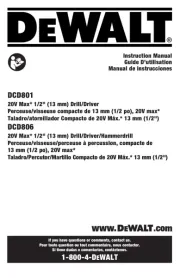
3 Augustus 2025
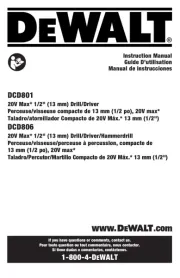
29 Juli 2025

4 Juli 2025
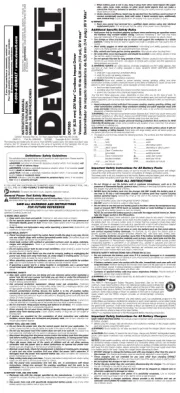
10 Juni 2025

2 Januari 2025

22 November 2024

15 November 2024

2 November 2024

23 September 2024

11 September 2024
Handleiding Boormachine
- Profitech
- Einhell Bavaria
- Holzmann
- Global
- Skil
- Toolland
- Alpha Tools
- Ribimex
- Mafell
- Stalco
- MyTool
- Proxxon
- Maestro
- Ryobi
- Blucave
Nieuwste handleidingen voor Boormachine
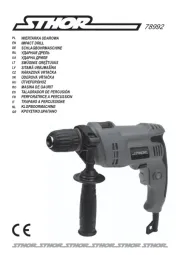
13 September 2025
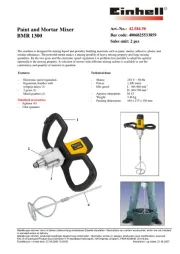
13 September 2025
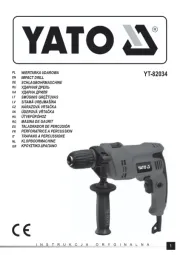
12 September 2025
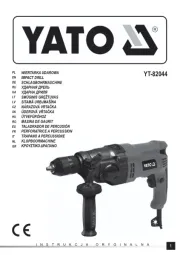
12 September 2025
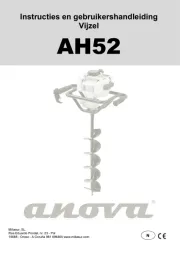
9 September 2025
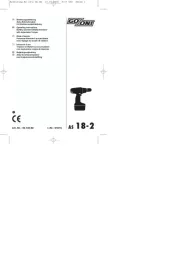
8 September 2025
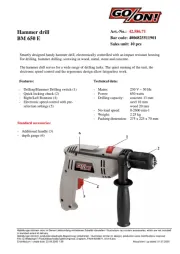
7 September 2025
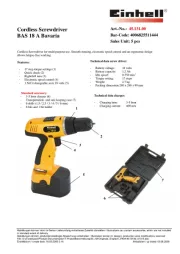
2 September 2025
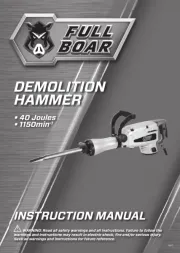
2 September 2025
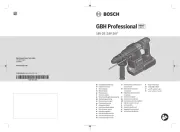
2 September 2025